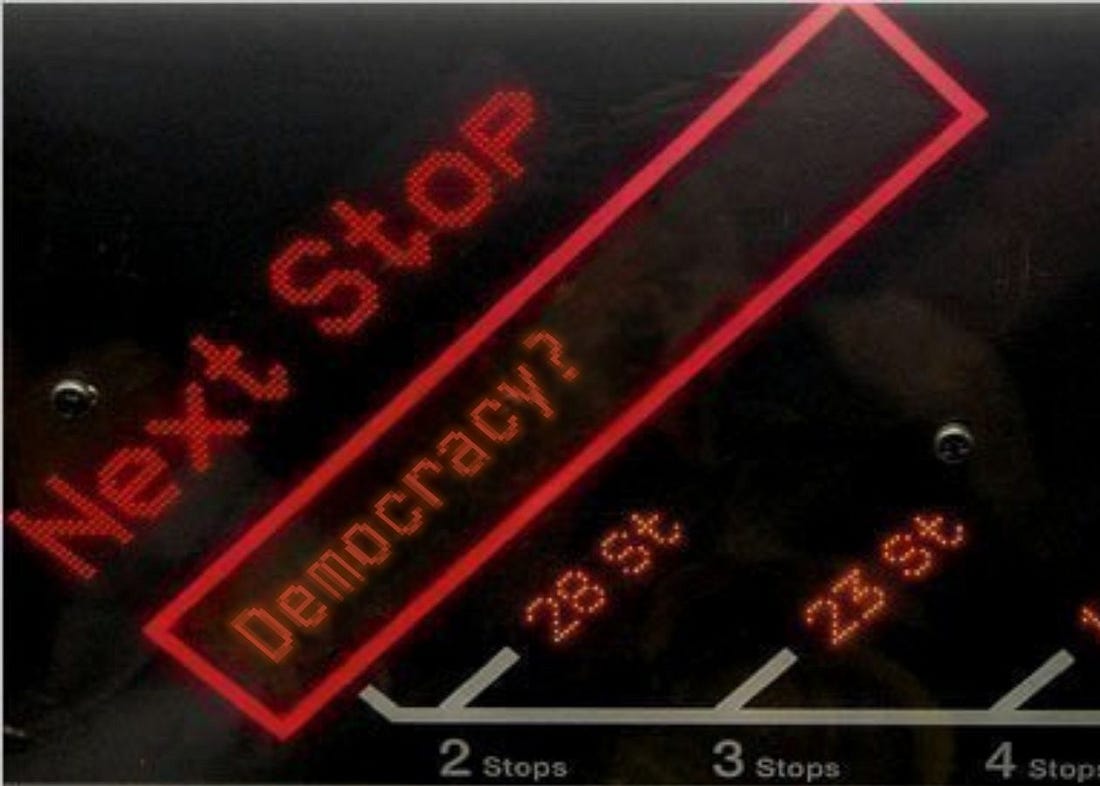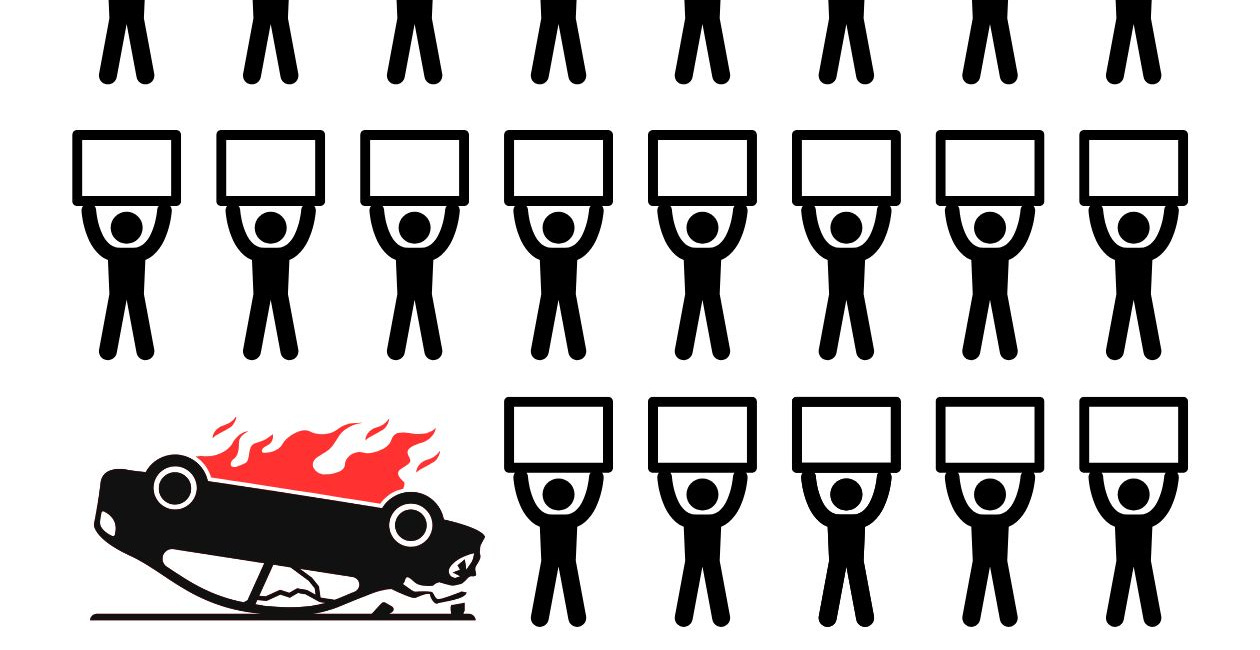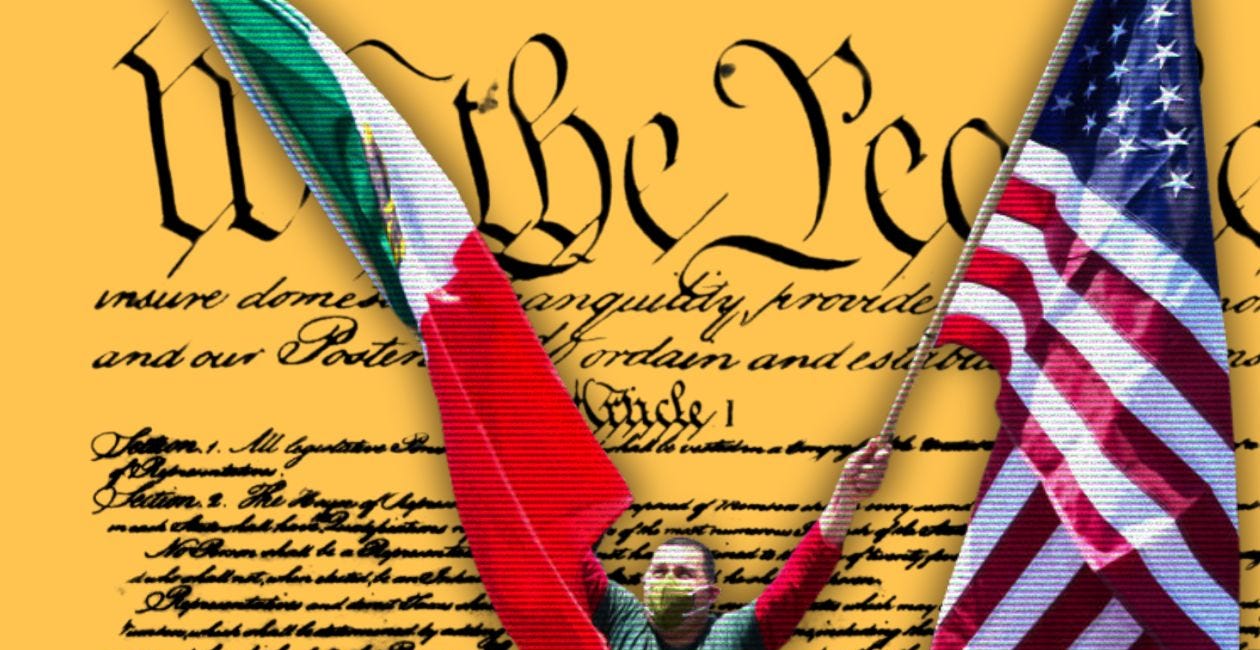|
The American Opposition Has a Mandate. Will They Accept It?
After millions marched, the real test begins: Will the movement—and its leaders—follow through?
It feels anticlimactic to master the game of chess and face down Vladimir Putin only to get stumped by tech issues on a livestreaming platform… and yet here we are. Substack Live continues to vex us. I’m very sorry that last night’s broadcast on the Russia-Iran axis didn’t work out—we missed you! We’ve communicated with the Substack team and it looks like the issue has been resolved, so we’re going to try again—join us Live today at 5pm ET/2pm PT.
We do a fair bit of (fair) criticism here at The Next Move. So to mix things up, we’re going to start with some positivity. Even a Russian dissident is capable of such things!
Five million people protested across the United States over the weekend—for liberal democracy and the rule of law and against a wannabe strongman. That’s 1.5% of all Americans taking part in a coordinated action. In some cities, the share of the population that took to the streets was even greater. Take, for example, Philadelphia, where roughly 100,000 went out—equal to 7% of the city of 1.5 million. Participants waved the stars and stripes and channeled this nation’s best values. It represented a powerful split screen next to Trump’s flaccid display of authoritarian impotence along the military parade route in DC.
Credit where it’s due—I have little to quibble when it comes to what actually took place this weekend. The protests were thoughtful, patriotic, and peaceful.
But I do have some thoughts on what comes next.
First: This can’t be a one-off.
In order to have a long-term impact, mass demonstrations need to be a sustained phenomenon. They should be happening at a regular cadence—ideally weekly. Attendees can’t go to a march, grab a selfie for their Instagram story, feel good about themselves, and wash their hands of their civic responsibility. Of course, not every person will have time to join in at every event, but as protests become more frequent they can absorb some degree of churn.
Next, sharpen the ask.
The theme of the recent protests—supporting American democracy—was pitch perfect. The message, however, was a little scattered. For the first round, I’ll give that a pass—the objective at this stage in the game was to raise visibility and emphasize that the status quo is not normal—something successfully accomplished by the No Kings rallies. The next step needs to be to refine that messaging. In Russia, our appeal was clear: we wanted the government to hold free and fair elections. Protesters here in the US will have to ask themselves—what, specifically, are we calling for? “Democracy” is a system, not a demand.
The object of the protests will also need to be strategically defined.
I wrote last week that admonishing Trump and his most loyal sycophants is an empty gesture. The president and his inner circle are unburdened by guilt. They feel vindicated by their return to power. Still, there are those with influence who could do something yet remain paralyzed by inaction, namely the Democratic leadership. Senator Chuck Schumer actually did show up to a demonstration in New York—the bare minimum. Yet Hakeem Jeffries evidently failed to pass even that basic threshold.
At this point, politicians have no excuse for fence-sitting. The opposition’s elected representatives have a mandate for hearings, investigations, and—where necessary—lawsuits. Every single day. The No Kings protests approached the 3.5% rule—the notion, advanced by Harvard’s Erica Chenoweth, that no government can withstand a protest movement mobilizing 3.5% of the population. Naturally, there are exceptions and even Chenoweth concedes that this is more “a tendency, rather than a law,” but the underlying point is sound: Get enough people peacefully resisting the administration and something will have to budge.
Of course, it won’t be easy. Here’s a preview of what lies ahead:
With Russia and Iran making a mockery of Trump’s posturing as a “peace candidate,” domestic policy—specifically, immigration—remains the president’s last card. We know from Los Angeles how the president will proceed. Launch deportation raids that disrupt immigrant communities and trigger protests in Democratic jurisdictions. Do everything possible to pick a fight with municipal and state authorities and provoke a violent response. Then send in the troops—National Guard, Marines—why not Army and Air Force next?
Meanwhile, tragedies like the assassination of Democratic state legislator Melissa Hortman in Minnesota are predictably unpredictable—we can’t know what exactly will happen or when, but we can know that disruptive events will send things off course. Trump, we must be clear, had nothing to do with the killings, but the president and his allies will eagerly use such episodes to sow doubt and fear.
While there were absolutely some incidents of rioting, California failed to deliver the big explosion Trump was hoping for. No matter—he’s taking a scattershot approach now, with raids planned across several major cities, all blue. True, a civilized nation needs to enforce its laws—includng on immigration. What Trump is doing is not that—it’s transparently partisan, with Trump talking about going after the “Democrat Power Center” while avoiding raids in friendly states and sensitive industries, wielding ICE as his own personal political weapon. Events in LA revealed the contours of what authoritarian provocation looks like in America.
This past weekend’s nonviolent protests provided one ingredient for the antidote. The demagogues won’t stop. It’s essential that you don’t either.


